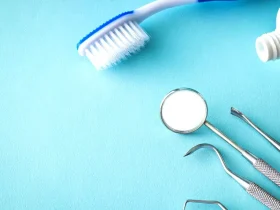If you’re thinking about quitting Suboxone, you’re likely wondering what the process looks like and how long it might take. Suboxone is often used to help individuals manage opioid addiction, but just like any substance, it comes with its own set of withdrawal challenges. The detox from Suboxone isn’t something to take lightly—it’s a process that requires time, patience, and in many cases, professional support. In this article, we’ll walk through the Suboxone detox timeline, what you can expect during the withdrawal process, and answer some common questions to help you feel more prepared.
What is Suboxone?
Before diving into the detox process, let’s start with what Suboxone is. Suboxone is a medication that combines buprenorphine and naloxone. It’s used in the treatment of opioid addiction because it helps to reduce withdrawal symptoms and cravings, making it easier for people to stop using stronger opioids like heroin or fentanyl. However, Suboxone itself can be habit-forming, which is why many people eventually choose to taper off or completely quit.
The Detox from the Suboxone Process
Detox from Suboxone can be tricky because the drug is long-acting, meaning it stays in your system longer than many other opioids. This can make the withdrawal process more prolonged, but potentially less intense than rapid-acting opioids. However, the timeline and severity of symptoms can vary greatly from person to person based on factors like how long you’ve been taking Suboxone, the dosage, and your overall health.
Day 1-3: Early Withdrawal Symptoms
During the first few days of detoxing from Suboxone, withdrawal symptoms start to set in. Since Suboxone has a long half-life, you may not feel much during the first 24 hours, but by day two or three, symptoms like anxiety, restlessness, sweating, and muscle aches will likely begin. Some people also experience flu-like symptoms, making this stage uncomfortable but not unbearable.
Day 4-7: Peak Withdrawal Symptoms
This is when the withdrawal process tends to peak. You may experience intense cravings, irritability, and trouble sleeping. Physically, this stage might include nausea, vomiting, diarrhea, and increased sweating. Although these symptoms can be challenging, it’s important to remind yourself that they’re temporary and part of the detox process. This is also when professional help can make a significant difference, as medical detox programs can offer medications to ease these symptoms.
Day 8-14: Tapering Symptoms
After the first week, symptoms will generally start to taper off, although you might still experience lingering anxiety, depression, and fatigue. These symptoms are part of what’s known as “post-acute withdrawal syndrome” (PAWS) and can persist for weeks or even months after detox. However, the worst of the physical symptoms will have passed, and many people start to feel more like themselves as time goes on.
Weeks 2 and Beyond: Long-term Recovery
Once you’re past the acute withdrawal stage, the focus shifts to long-term recovery. Emotional symptoms like mood swings and insomnia may linger, but they become more manageable with time. At this stage, it’s crucial to engage in therapy or a support group to address the psychological aspects of addiction and prevent relapse. This phase of recovery is where many people also start to rebuild their routines, relationships, and physical health.
Why Professional Help Matters
While some people attempt to detox from Suboxone on their own, it’s generally not recommended. Detoxing without medical supervision increases the risk of relapse, and in some cases, withdrawal symptoms can become dangerous. Medically-assisted detox programs can provide medications to ease withdrawal symptoms, monitor your health, and offer emotional support through the most difficult stages of withdrawal. This can make the detox process more comfortable and significantly increase your chances of successfully quitting Suboxone for good.
Common Symptoms During Suboxone Detox
Physical symptoms: Sweating, chills, flu-like symptoms, muscle aches, stomach cramps, and diarrhea.
Emotional symptoms: Anxiety, depression, irritability, mood swings, and a sense of unease.
Cognitive symptoms: Difficulty concentrating, memory problems, and brain fog.
Sleep disturbances: Insomnia, frequent waking, or restless sleep.
Coping Strategies for Suboxone Detox
Detoxing from Suboxone can be tough, but there are several ways to make the process more bearable:
Stay hydrated: Dehydration can make symptoms like sweating and diarrhea worse, so be sure to drink plenty of fluids.
Eat a balanced diet: Proper nutrition can help your body recover faster.
Practice relaxation techniques: Meditation, deep breathing, or gentle yoga can help ease anxiety and promote better sleep.
Seek support: Whether it’s a close friend, family member, or a professional, having someone to talk to can make a world of difference.
Follow a tapering plan: Working with a doctor to slowly reduce your Suboxone dosage can significantly lessen withdrawal symptoms.
FAQs About Suboxone Detox
1. How long does it take to detox from Suboxone?
The detox process typically lasts between 7 to 14 days, but it can vary depending on individual factors like dosage and duration of use. Some people may experience lingering symptoms (PAWS) for weeks or months after the acute withdrawal phase.
2. Can I detox from Suboxone at home?
While it’s possible to detox from Suboxone at home, it’s generally safer to do so under medical supervision. A doctor can prescribe medications to ease withdrawal symptoms and monitor your health during the process.
3. What’s the difference between detoxing cold turkey and tapering off Suboxone?
Cold turkey means stopping the medication abruptly, which can result in more severe withdrawal symptoms. Tapering, on the other hand, involves gradually reducing your dosage over time, which can make the detox process more manageable.
4. Are there medications to help with Suboxone detox?
Yes, medications like clonidine and buprenorphine (under medical supervision) can help ease withdrawal symptoms during the detox process. Some people also benefit from anti-anxiety medications or sleep aids during detox.
5. How can I prevent relapse during detox?
Engaging in therapy, joining support groups, and having a strong network of family or friends can help you stay on track. Medication-assisted treatment (MAT) may also be an option to help prevent relapse.
Conclusion
Detoxing from Suboxone is a challenging but achievable process. Understanding what to expect during the detox timeline can help you prepare for the physical and emotional symptoms that come with withdrawal. Whether you choose to taper off or detox under medical supervision, having the right support and coping strategies can make a significant difference. Remember that this process is just the beginning—long-term recovery is about rebuilding your life and learning new ways to manage stress and cravings. Take it one day at a time, and don’t hesitate to reach out for help if you need it. With determination and the right resources, you can successfully detox from Suboxone and move forward on the path to recovery.






Leave a Reply
View Comments